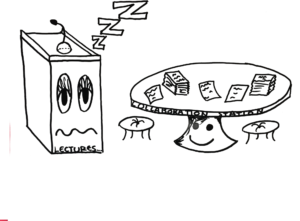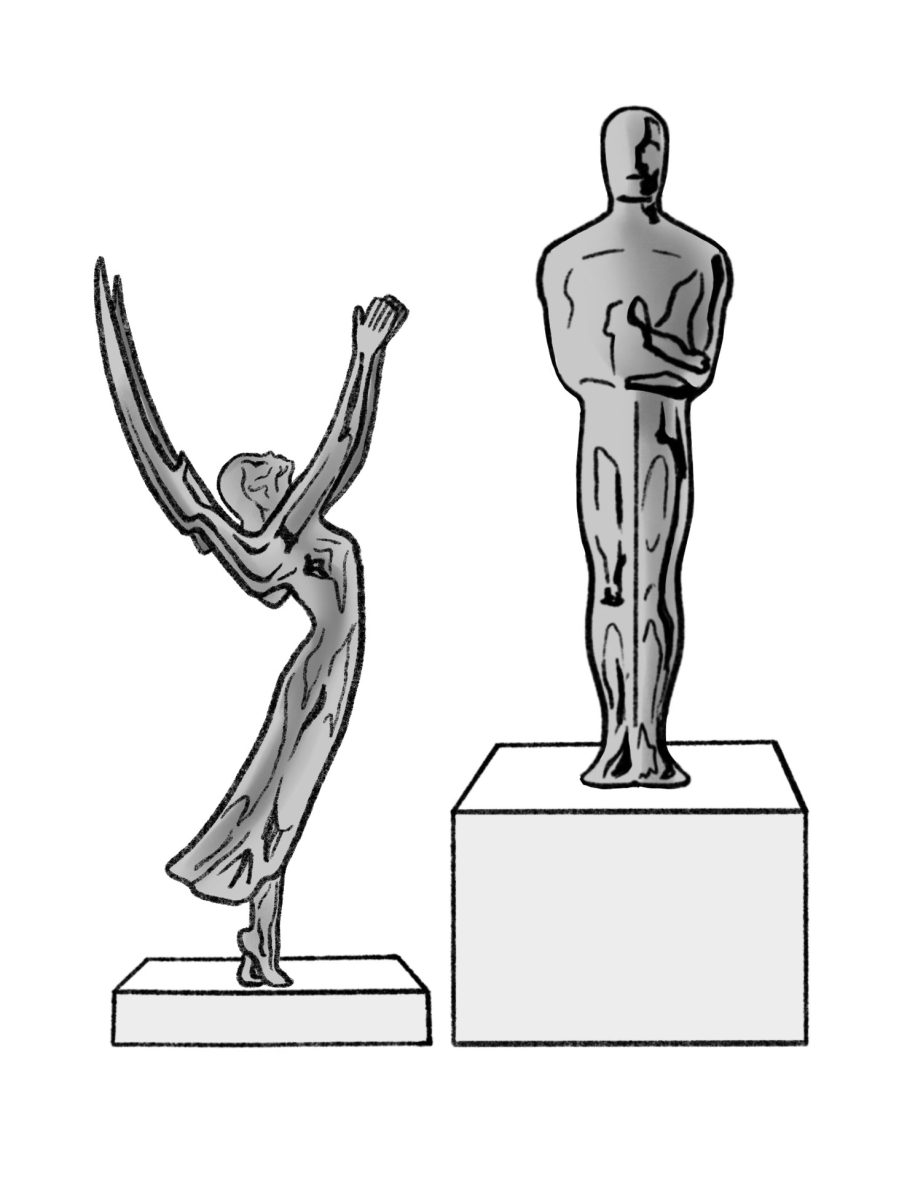
I gaze at the clock, which seems to be moving in slow-motion, and stifle a yawn. The teacher’s voice fades into the background and I start to doze off. The next thing I know, my head is falling and I am jarred awake as gravity grabs ahold of me. I’m not asleep anymore, but only a few minutes have passed. The lecture continues.
Lectures have been the predominant teaching method in high schools around the world, but several studies have shown that they are actually ineffective. There are other methods of teaching that actually work better than lectures: group work and hand-on learning.
Students in traditional lecture-based classrooms have been found to be 1.5 times more likely to fail a test than those in active learning environments. Average test scores improved by about 6 percent in those same classrooms when learning was more active and students participated, according to the Proceedings of the National Academy of Sciences (PNAS).
Teachers should take advantage of a classroom full of peers and encourage group work rather than rely only on lecture-style teaching. Peer learning and group work depend on participants, so classrooms are the perfect place for communication with at least 20 students all together learning the same subject.
During lectures, students are passive learners who take the information in only one way: through their ears. With projects and group work, information is ingrained in different ways to help the different kinds of learners in a classroom: the visual learners, active learners and listeners.
Peer learning is beneficial to the students in a classroom because it gives them the opportunity to teach their classmates through discussions, hear from each others and share ideas. The main advantage of learning actively and from peers is the variety of different viewpoints.
In real life workplaces, the exchanging of ideas is vital to furthering knowledge of any field. Take a doctor’s office, for example, where communication between doctors is how diagnoses are made, or a start-up business where building from the ground up depends on modeling after others’ work. Writing, editing and talking about other people’s work makes everyone involved a better writer. Without sharing ideas in scientific fields, scientists would not be able to build off of each other’s findings.
In a classroom setting, exchanging opinions and summarizing concepts can help students understand subjects and big ideas much better than if they were to solely rely on their textbooks and lectures. To be able to teach someone else a topic, the student would have to really understand the concept or would have to delve deeper into the issue to explain it thoroughly. With peer learning, students are forced to think about a subject in a different way to be able to communicate it to someone else. Group projects should also include writing, specifically notes, though often the note taking is up to each individual student. Group work could be furthered and made even more beneficial at Redwood by making projects even more independent so that the students have to rely on each other and figure things out by themselves. For example, the projects that force students to go farther into a subject with less guidance than just an essay assignment. They have to figure things out for themselves so students get a more coherent understanding of a topic because they had to figure things out for themselves and put all of their focus into it.
Not only does working together help enhance learning, it makes assistance more accessible to students. Instead of only having one teacher to ask clarifying questions to, students in group settings have at least 20 peers to converse with over a topic that they are confused about. Peer learning and group work also teaches kids leadership and people skills that can be taken advantage of later in life. In group projects and discussions, working together is a learned skill that can be extremely helpful in future social situations when taking charge in work environments is essential to success. Taking responsibility and showing authority in a classroom setting has the potential to teach highly-valued skills that can make students stand out later.
Here at Redwood, the many lecture-based classes are ineffective in a teaching environment because they do not engage students in the subject, which leads to a lack of interest and boredom.
According to a survey done at the University of Central Lancashire, over 25 percent of students admitted to having left class at the mid-session break at least once during a lecture.
Though there are some benefits to lecture-based learning in a classroom, those same positives are reflected in peer learning. The most helpful part of lectures is that they allow for the transmission of large amounts of information to large groups.
A supporter of lectures, Johns Hopkins University Professor Mary Burgan, says “Teachers are irreplaceable as models of knowledgeable adults grappling with first principles in order to open their student’s understanding.”
Another positive of a lecture includes the act of physically writing notes in your own handwriting, which can definitely help to ingrain information. Even with the favorable aspects of lectures, group work is a much more involved process that gets students to participate in an active way, enhancing the learning.
Though teachers are an indispensable source of knowledge for students, group work is also extremely valuable. Teachers are not the only source for students to go to enrich their understanding. If the atmosphere in a classroom consists of discussing and sharing, then students could further learn from each other by listening to their classmates’ perspectives on various topics. Lectures are less effort to organize than projects and group assignments. But, the extra effort necessary in group projects and peer discussions is worth it.
Teachers that use a lecture-based learning style could use discussions and interactive learning in classrooms to keep students participating and involved in the information. Especially with the increased accessibility and frequency of technology in schools, organization and execution of group projects is easier. Lecture-based learning in a high school setting should be completely replaced with classrooms that do not solely rely on the teacher, but rather depend on the network of students to function and the use group work to communicate knowledge of a subject.
















